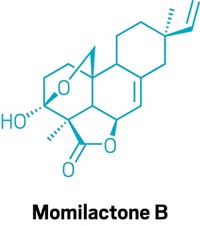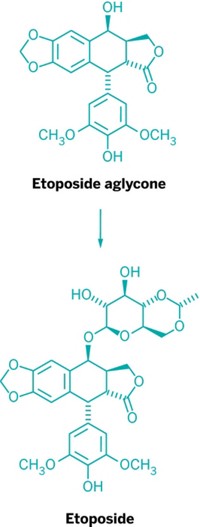Advertisement
Grab your lab coat. Let's get started
Welcome!
Welcome!
Create an account below to get 6 C&EN articles per month, receive newsletters and more - all free.
It seems this is your first time logging in online. Please enter the following information to continue.
As an ACS member you automatically get access to this site. All we need is few more details to create your reading experience.
Not you? Sign in with a different account.
Not you? Sign in with a different account.
ERROR 1
ERROR 1
ERROR 2
ERROR 2
ERROR 2
ERROR 2
ERROR 2
Password and Confirm password must match.
If you have an ACS member number, please enter it here so we can link this account to your membership. (optional)
ERROR 2
ACS values your privacy. By submitting your information, you are gaining access to C&EN and subscribing to our weekly newsletter. We use the information you provide to make your reading experience better, and we will never sell your data to third party members.
Biological Chemistry
New Way To Reduce Lignin Output
Plant Chemistry: Previously unknown biosynthetic pathway could aid biofuel research
by Sarah Everts
August 16, 2013
| A version of this story appeared in
Volume 91, Issue 33

Plants use the sturdy polymer lignin as a skeleton so they can stand upright; it’s also an essential scaffold for plant nutrient and water transport systems. But the polymer is a bane to biofuel researchers. Lignin interferes with efforts to extract glucose and other sugars from plant cellulose to convert them to ethanol biofuel.
Researchers have been trying to find ways to adjust levels of lignin in plants so that, without entirely eliminating the structural polymer, useful sugars can be more efficiently extracted. A research team led by Wout Boerjan at Ghent University, in Belgium, and Claire Halpin at the University of Dundee, in Scotland, has now uncovered the role of an enzyme called caffeoylshikimate esterase (CSE) in lignin biosynthesis. Manipulating that enzyme could bolster lignin-reducing efforts (Science 2013, DOI: 10.1126/science.1241602).
Although the primary lignin biosynthetic pathway was discovered decades ago, CSE is part of a previously unknown parallel route for making the scaffolding polymer. When the team knocked out the enzyme’s gene from Arabidopsis plants so it could not help build lignin, four times as much cellulose could be converted to glucose as in nonmodified plants. However, the knockout plants were smaller and less sturdy than the wild type.
“Between 1990 and 2000 there was a revolution in our understanding of how lignin is made by plants,” comments Clint Chapple, a plant biochemist at Purdue University. “We thought we had the biosynthetic pathway worked out. To have a new player identified is not only intellectually exciting but could also provide a new tool for extracting valuable sugars” for biofuel applications.
Boerjan says that the team found the new route by examining what happened when known lignin biosynthetic pathway genes were turned on or off and looking for other genes whose expression followed the same rhythms. Then the team did a battery of biochemical tests to determine CSE’s substrate (caffeoylshikimate) and the enzyme’s role in lignin biosynthesis.
Chapple points out that most plant metabolism is highly plastic, so that if you knock out one enzyme in an essential pathway, other parallel pathways often compensate. Researchers in the field will need to figure out how to best manipulate CSE for tweaking levels of lignin in plants destined for biofuel, he says, but regardless of how it is exploited, the newly discovered pathway “will certainly be an important tool.”






Join the conversation
Contact the reporter
Submit a Letter to the Editor for publication
Engage with us on Twitter